How to Choose the Right Furniture for Your Home Office
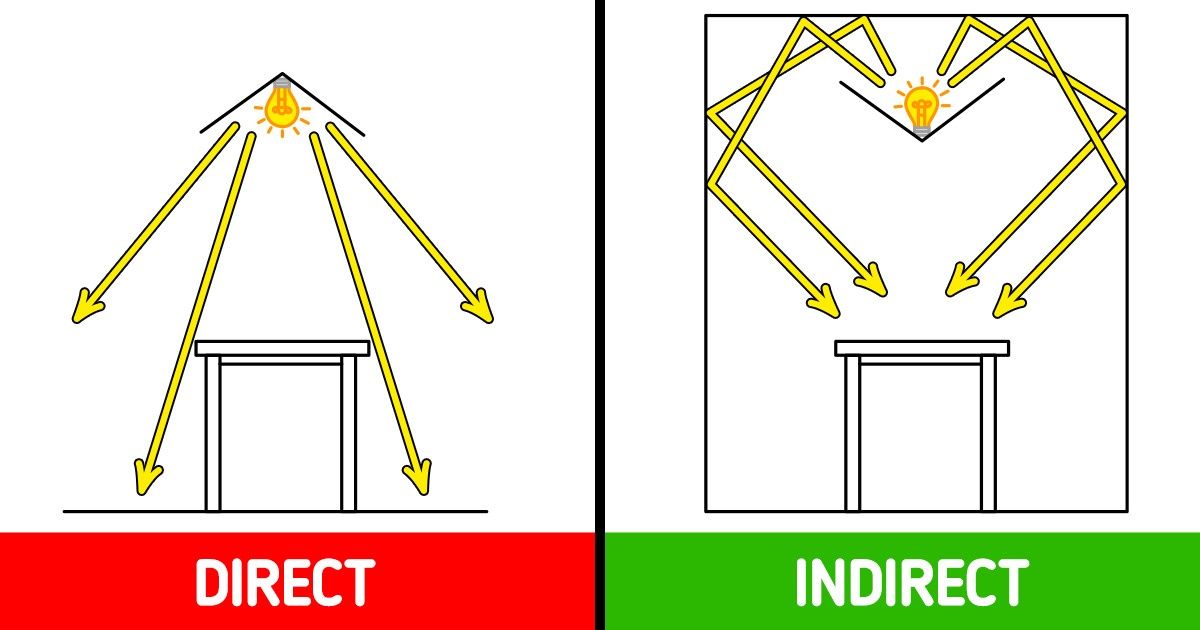
Investing in a home office setup is an investment in yourself. You want to create a professional environment where you will be productive and also comfortable. In fact, research has shown that working from home can enhance your productivity because you can work in comfort. And while it may be tempting to buy the “bargain” office furniture, the cheapest desk won’t save you money in the long run.
5-Minute Crafts found some handy tips you can use to choose the perfect furniture to work from home.
1. The chair
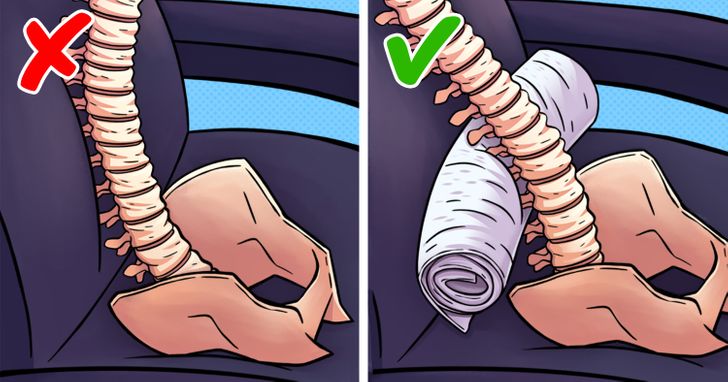
If you don’t have room for a new seat or if you don’t have a stationary workspace, at least treat yourself to a cushion, like a small memory foam one to sit on. Also, make sure to sit all the way back in your chair.
- Note: There are a lot of bad chairs out there that can injure you over prolonged computer use. Dining chairs and deck chairs are rarely at the right height and they don’t always encourage the necessary upright posture. If you need more support for your lower back you can place a small pillow or rolled towel on the chair to help maintain your spine’s natural curve.
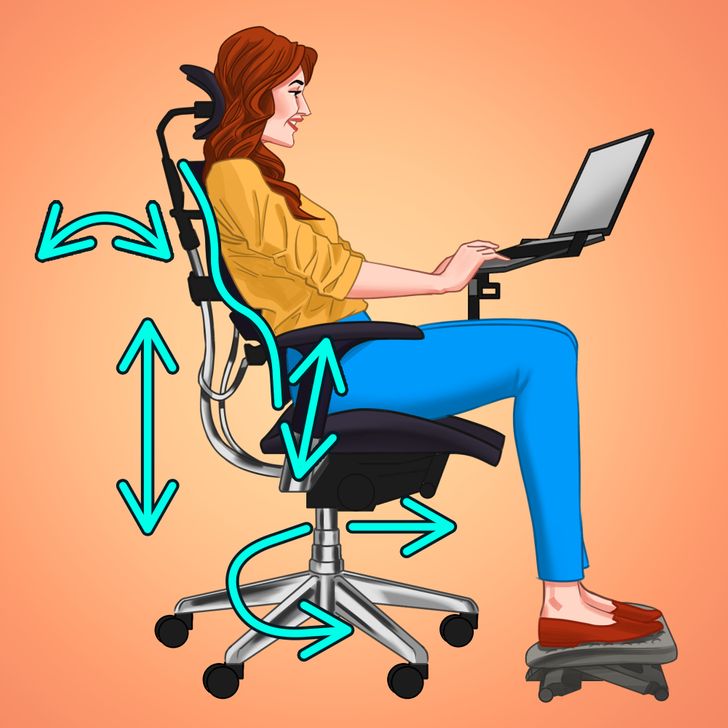
If you do have a stationary workplace, it can be tempting to just grab any chair from the dining area but sitting without proper support for your back is a fast track to posture problems. Office chairs offer the correct support when you’re sitting for long hours.
Some of the features you should look for in an ergonomic chair are:
- Adjustable height
- 360-degree swivel base
- Adjustable backrest and armrest
- Adjustable seat depth
- Built-in lumbar support
Proper chairs can cost more than $600 but there are also some that can be found for $150 and $250 that will do the job just fine. Since it’s still an investment, try to test them out in person if possible.
2. Desks and work surfaces
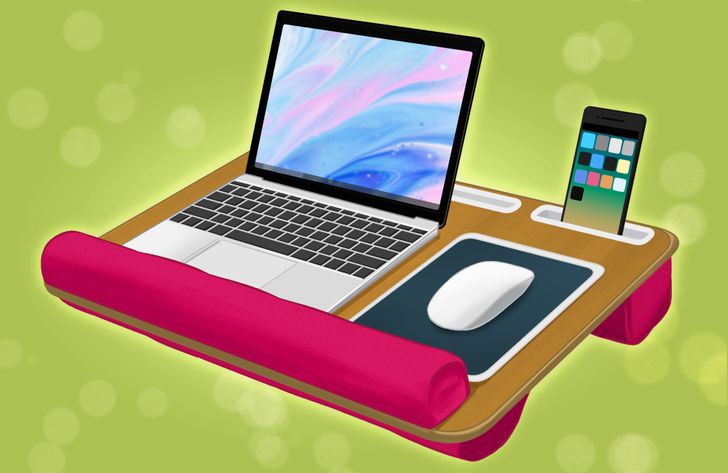
If you don’t have room for a desk, invest in a lap desk so you have a sturdy, raised surface to set your computer and other essentials on.
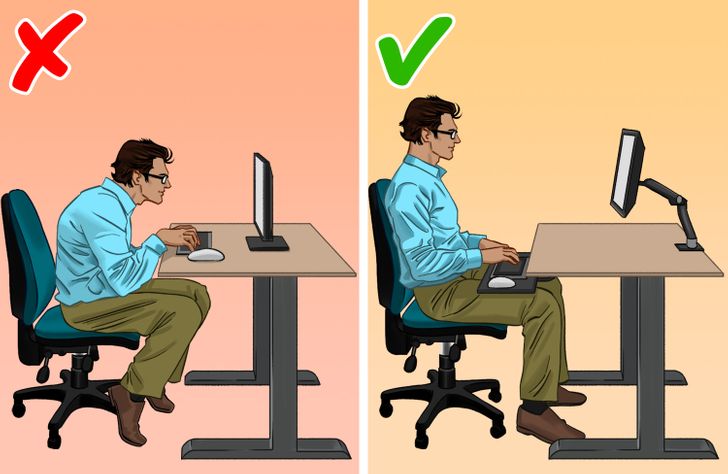
If you have a stationary workspace, you need a desk or table that is at work height. Standard desks are 29 inches high. That’s ideal when you write on paper, but not when using a keyboard and a mouse.
Since many desks and tables have an adjustable height, consider lowering them for you to:
- Sit up straight.
- Have your forearms parallel to the ground.
- Avoid bending your wrist up or down when you type or use a mouse. Bending them for long periods of time is an easy way to cause injury.
- Make sure to have the top surface of your wrist on the same plane as the top of your forearm, with your fingers dangling slightly down to the keyboard. Installing a keyboard-and-mouse tray is recommended if you can.
- Try a large book to prop your feet up if they don’t reach the floor or aren’t flat. It’s important that they’re flat and supported to ensure your posture muscles don’t tire throughout the day.
- Get a writing surface (like a thin cutting board) for pen-and-paper work.
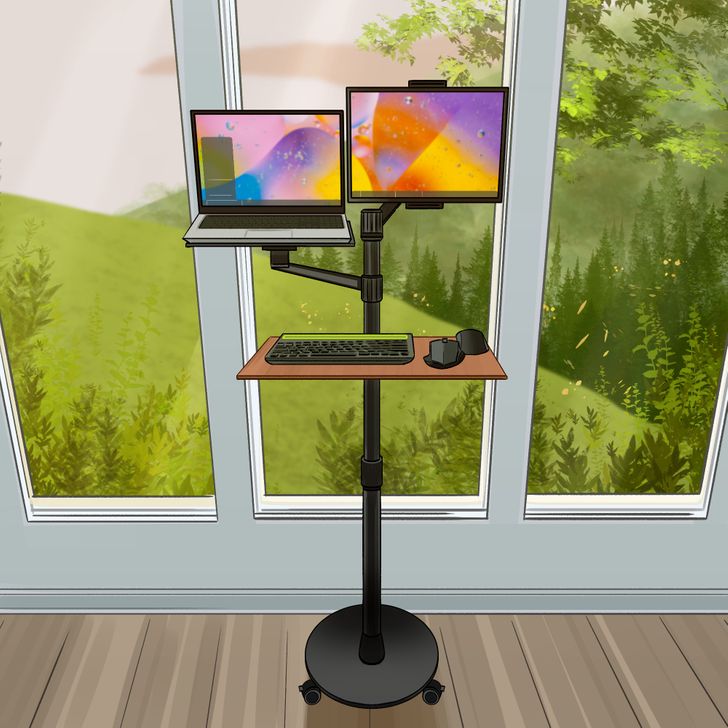
Sitting all day and standing all day can cause both aches and pains or even long-term health issues, so consider getting an adjustable standing desk. That way you can sit when you feel like it but also stretch your legs. There is some evidence that standing desks are better for your health.
3. Lighting
Natural lighting from windows and skylights is terrific, but you will also need quality electrical lighting, which can make a huge difference in reducing eyestrain and increasing productivity. Poor lighting will cause you to strain your eyes and, over time, that could cause you to suffer from headaches.
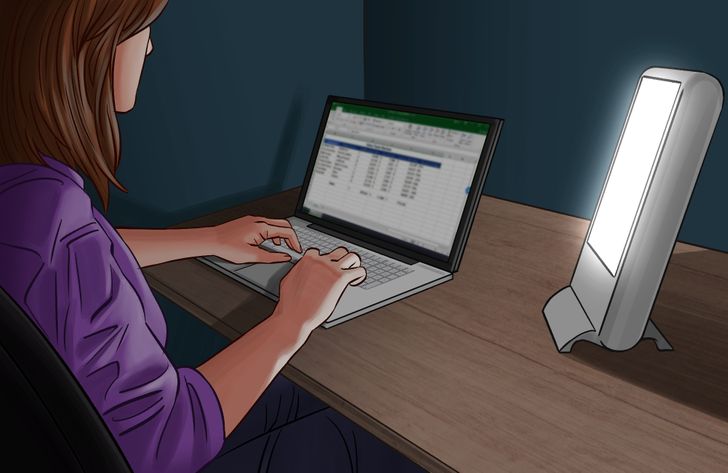
If you don’t have natural light, consider the following:
- Dimming lights are a great option. That way you can adjust the brightness as needed.
- Otherwise, try something like the HappyLight. It’s shaped like an iPad, but its only function is to emit white, natural-looking light.
- Also change any dull bulbs for new ones to make sure your space is well lit.
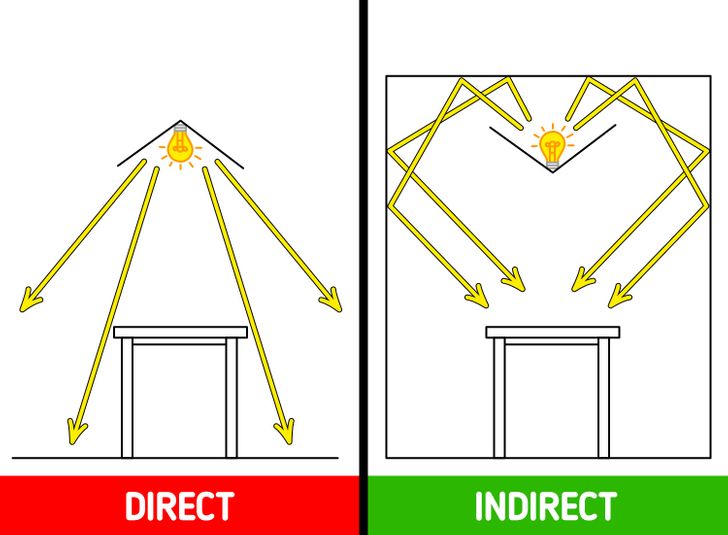
If you just need more light, remember that direct overhead lighting can create a glare on your screen or desk, making it hard for you to see. Your best options in that case are:
- A task lamp with a solid shade that helps you shine a light right where you need it for specific tasks. Don’t place it right next to a monitor, where it could create a glare. Instead, choose a place that’s not in your direct field of vision when you’re working on the computer.
- Indirect light. These have lamp shades or diffusers that soften the light, creating less glare and making it easier on your eyes. Just make sure the light isn’t too diffused or you won’t be able to see what you’re doing.
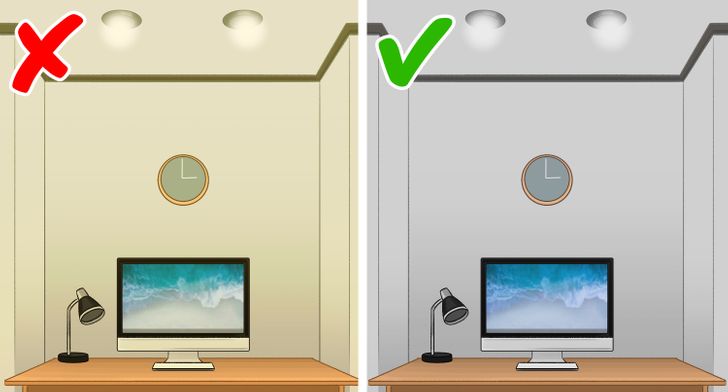
In any case, try not to choose a lighting that is too bright because it will tire your eyes out easily, but don’t use lighting that is too dim either because it will make you feel sleepy. If you use a computer for work, you should make sure to have white light. Yellow light will sting your eyes when you sit in front of a screen for too long.